The trillion dollar opportunity for the industrial sector

Points of Discussion
- Background
- 5 Areas of Industrial Sector That Can Be Captured Using Tech Enablement
- Innovating & Developing Products and Services
- Making & Delivering
- Selling
- Servicing
- Running The Corporation
- Prerequisite
- Foundation: Data Strategy, Cybersecurity, Cloud Infrastructure, Cloud Infrastructure, & Analytics
- Organization: Agile Operating Model & Culture
- Accelerators: Design Thinking & Ecosystem
- Getting Started
- Summary
Background
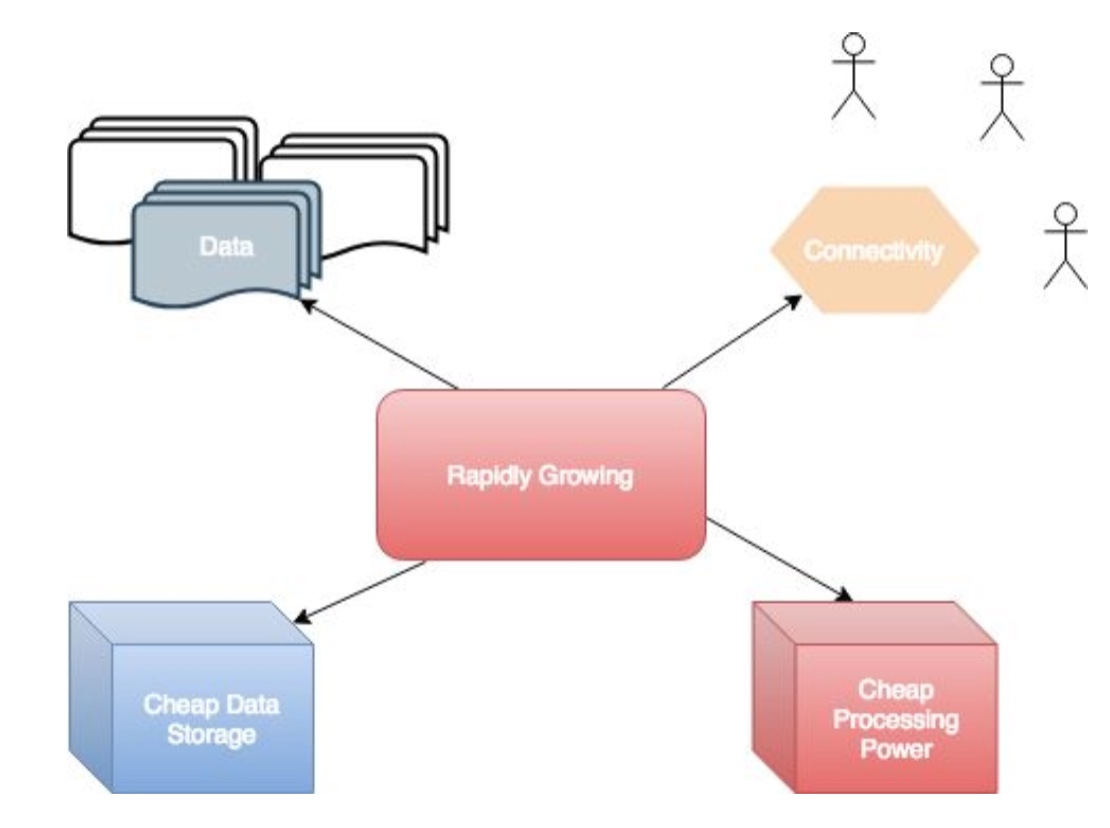
As data, connectivity, processing power, and storage expand, opportunities for industrial companies to extract value through innovative products, services, operational efficiencies, and business models for their next growth are more obviously feasible to reach.
Many companies are selecting technologies on a case-by-case basis instead of selecting technologies to serve their strategy or meet specific business value, working out which technologies will help achieve them, and then doubling down to achieve impact across the enterprise.
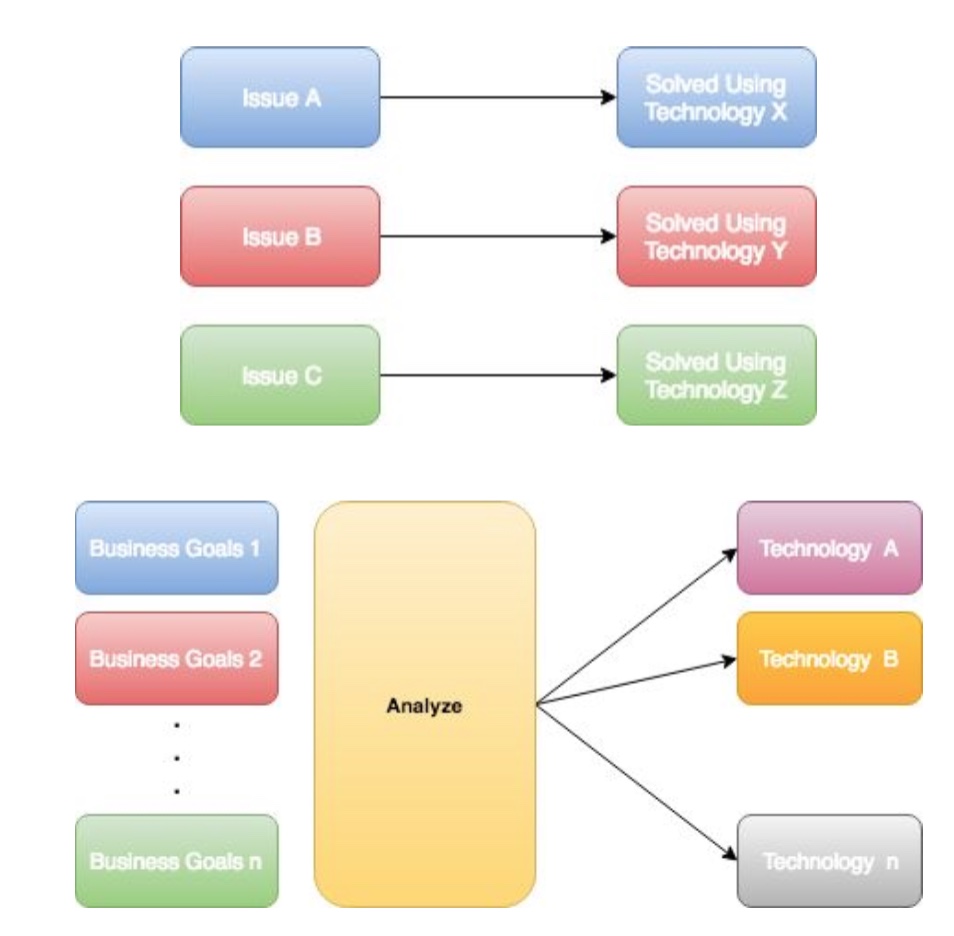
McKinsey’s analysis shows that successful transformation across the whole industrial sector would be worth $0.8 - $2 trillion (an increase of 9% - 11% for shareholder).
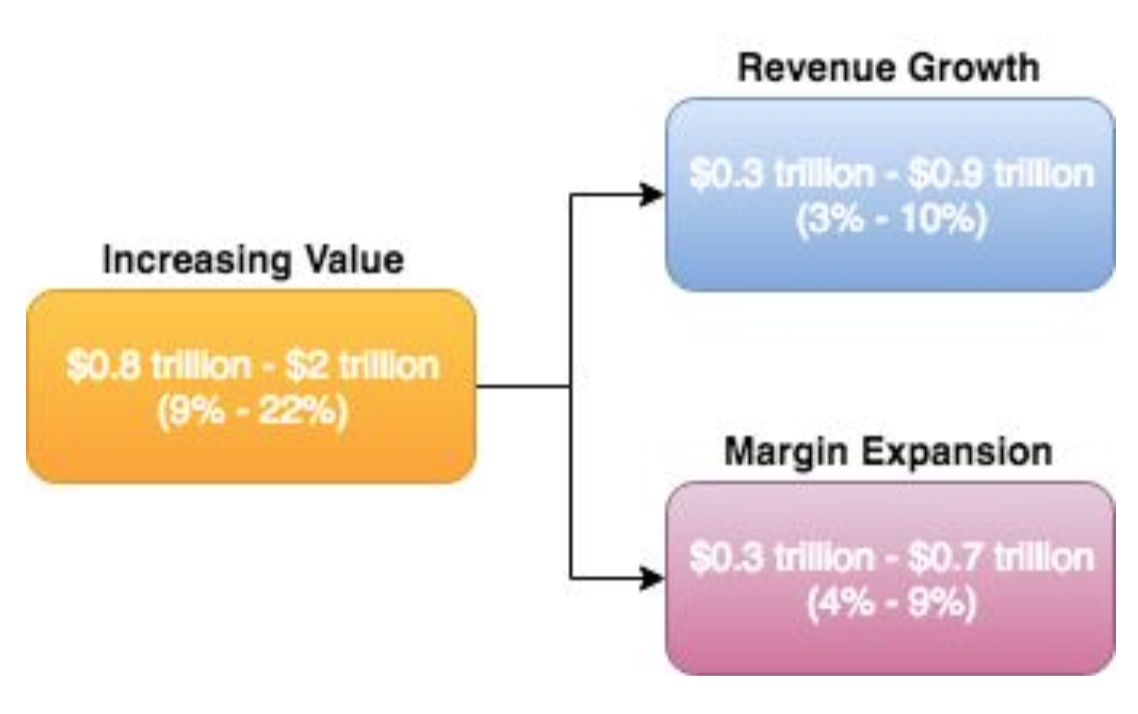
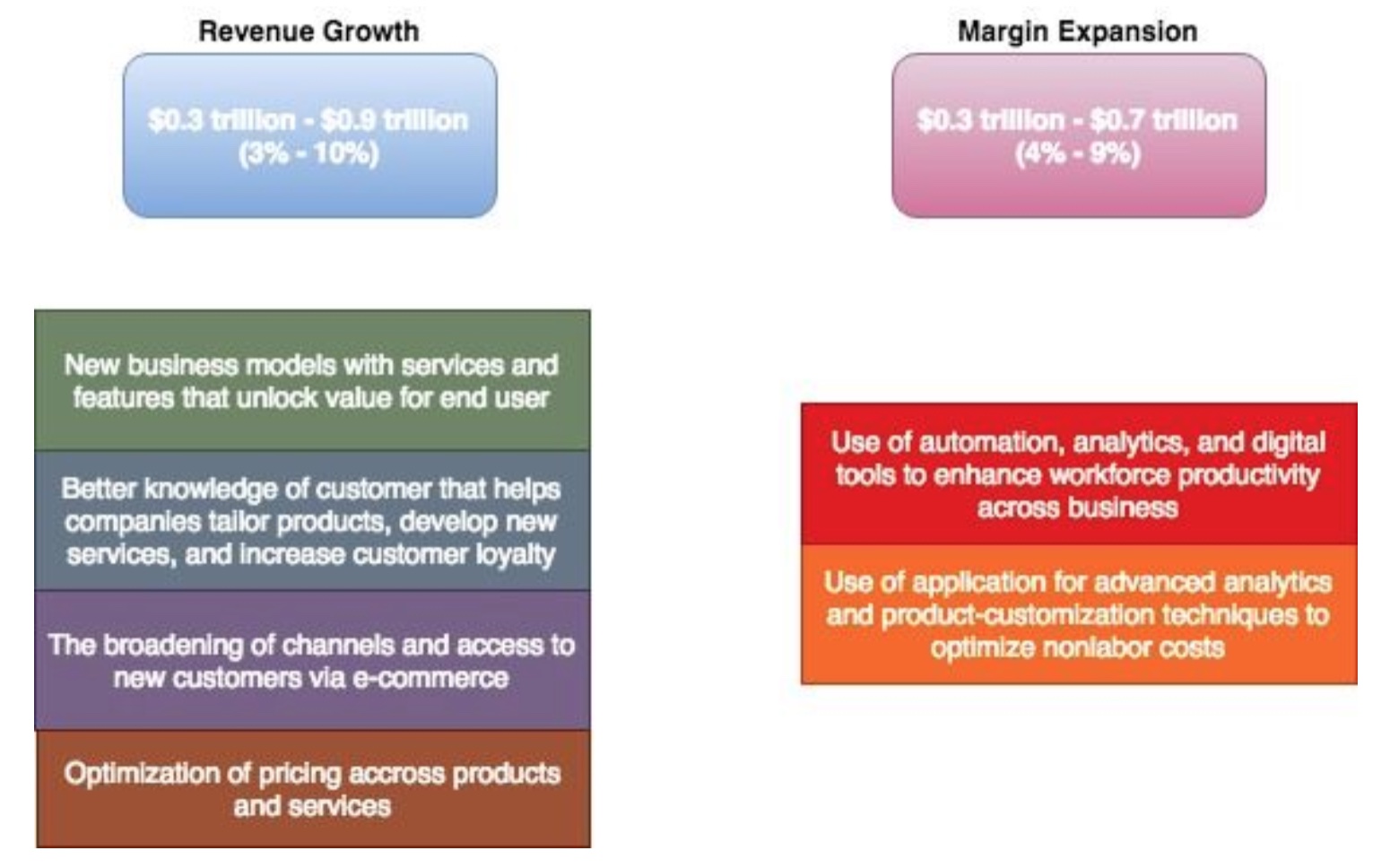
5 Areas of Industrial Sector That Can Be Captured Using Tech Enablement
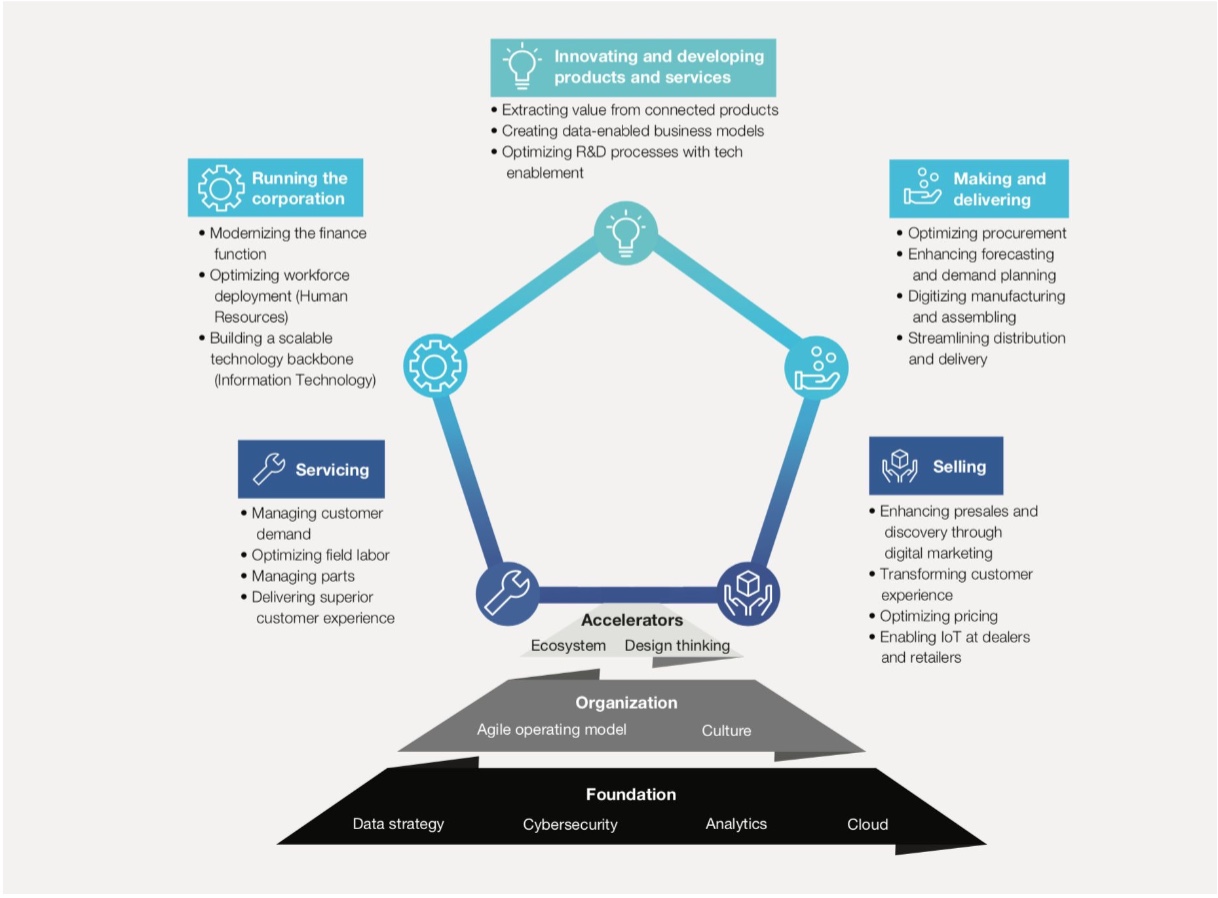
1. Innovating & Developing Products and Services
What?
- Extracting value from connected products
- Creating data enabled business models
- Optimizing R&D processes with tech enablement
Why?
- As connectivity spreads, data sources poliferate, and valuable insight can be generated in real time
Where?
- Internal
- End user’s place
How?
- Intimate knowledge of end users
- Getting to know your customer’s customer
- Monitoring real time activity & condition
- Ease and shopisticated control
- Adjust operating parameters and settings in real time to suit current condition
2. Making and Delivering
What?
- Cut cost
- Increase yield
- Support new manufacturing methods
Why?
- Business can capitalize on advances in automation, machine learning, and robotics to make themselves more cost-efficient, flexible, and responsive to customer needs
How?
- Automate production process to reduce human-error cost
- Automate moving parts using robot with intelligent control
- Automate monitoring quality
3. Selling
What?
- Catch up digitally savvy customer
- Improve sales
Why?
- As Industrial buyers and end users has already become more digital savvy, they are increasingly doing their product research and order tracking online ofter via tablets or smartphones
- Traditional channels and sales models are already being disrupted by innovators
Where?
- Sales
How?
- Understand how customers buying
- Asses which digital tools and channels will add most values to reinvent the selling platform
- Options are:
- E-commerce through an analytics engine
- Microsegmentation to digital customer-experience tools
4. Servicing
What?
- Managing customer demand
- Optimizing field labor
- Managing parts
- Delivering superior customer experiences
Why?
- In aerospace, automotive, commercial vehicles, and other advanced sectors, aftermarket sales have grown more quickly
- As capital investment in new equipment has slowed
Where?
- Service
How?
- Create new models/business of servicing
- Aftermarket sales product service
- Field-force management, scheduling, and parts management to reduce costs and improve productivity by tech enablement
5. Running The Corporation
What?
- Modernizing finance functions
- Optimizing workforce deployment
- Building scalable technology backbone
Why?
- Many industrial companies that have pursued growth via acquisition end up running their business on multiple ERP and legacy systems.
- General and administrative expenses accounts 4 to 8 percent of revenue
Where?
- Internal corporation
How?
- Automate manual processes via robotic process automation (RPA) to reduce costs
- Building data lakes (Big Data Platform) to centralize data sets across ERP, automating financial reporting & invoice generation, and using advanced analytics to improve cash management
Prerequisite
Ensuring the right enablers are in place
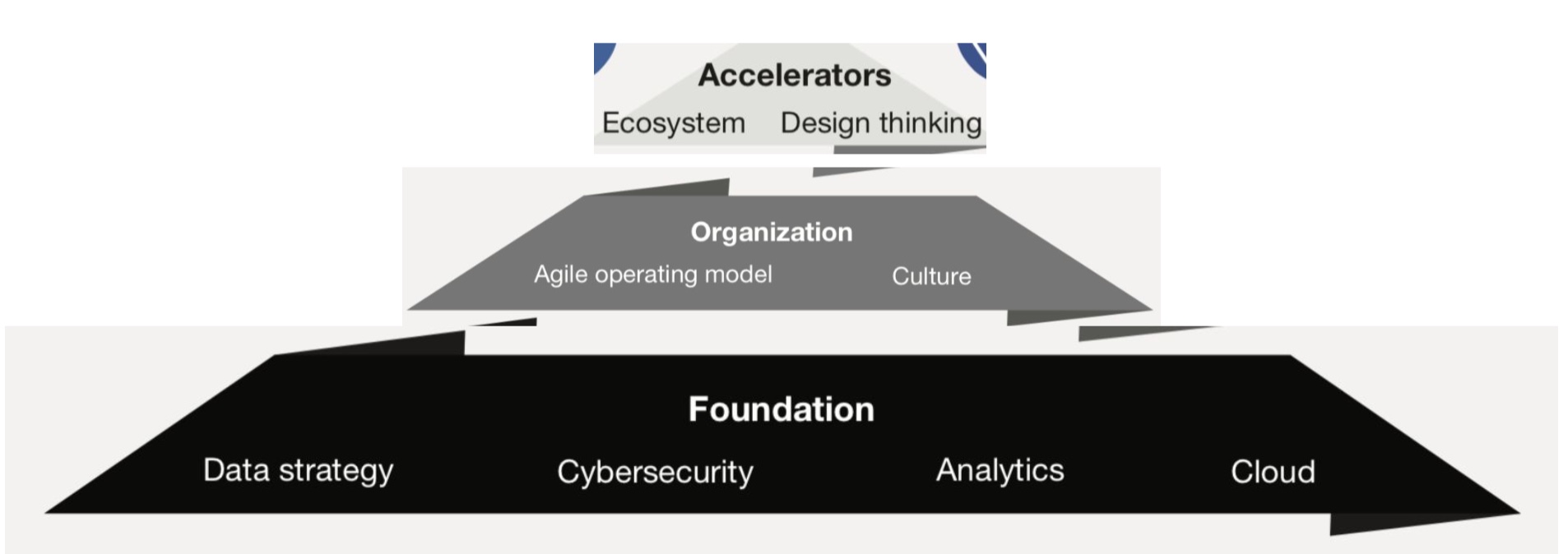
1. Foundation: Data Strategy, Cybersecurity, Cloud Infrastructure, and Analytics
Data Strategy
- Identify data sets to drive insight (data-driven)
- Understand sources of data sets
- Forming partnerships to access those that you need but don’t own
- Integrate data from many sources, gain insight, make impact!
Cybersecurity
- More and more connected devices and complex data structure
- Reduce threats
- Prioritizing assets and risk
- Improving controls and process
- Establishing effective governance
2. Organization: Agile Operating Model And Culture
Agile Operating Model
- Ability to respond quickly in changes needed
- Small flexible teams and clear process that allow timely decision making on issues relating governance, funding mechanism, resource allocation, and so on
Culture
- Organization culture
- Mind-set that embrace changes
- Comfortable for taking risks
- Views failure as a springboard for learning
3. Accelerators: Design Thinking And Ecosystem
Design Thinking
- Gain customer insight to rapidly innovate on products, services
- Offers calls for new capabilities and tight linkage between a company’s sales channel and its product organization (e.g. product update)
- Use closed-loop processes
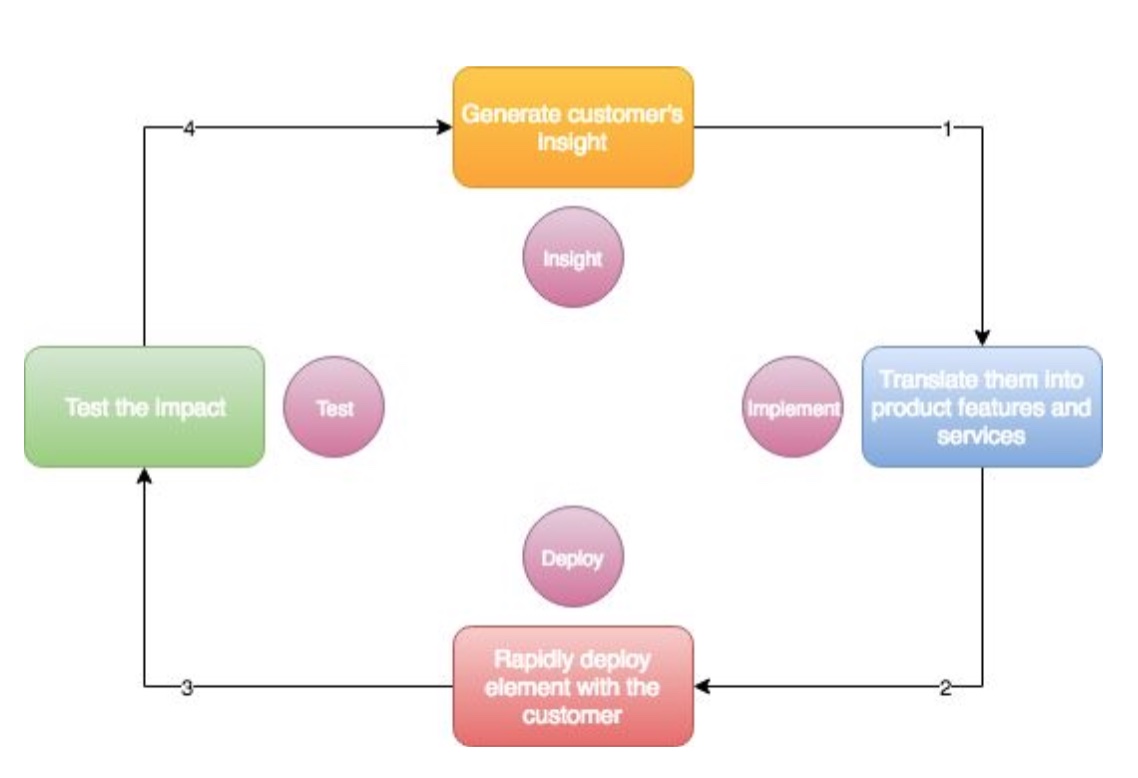
Ecosystem
- Establish a set of technology and go-to market partnerships
- Complexity of tech enabled transformation requires partners to share data, insight, and the value created in a mutually satisfactory and sustainable manner
Getting Started
1. Understand how new technologies affect working processes
- Technologies need to operate in conjunction with legacy systems and existing workflows
- (compatible with legacy systems)
- Integration
2. Understand where you are and build your transformation roadmap
- Understand current situation
- Set a baseline about the starting point and digital maturity, realisticly
- Define where the value lies
- Assess own capabilities
- Build a roadmap that prioritize and sequences the key elements in the transformation
3. Analyze the value chain elements in the business and where technology could be a ripe disruptor
Summary
As of industrial sector has been slower to digitize than many other sectors, advanced technologies now allow companies to reshape all their activities from product development to sales and servicing. Taking a bold, strategy-led approach and identifying opportunities systematically across the entire business is the best route to successful outcome.
Wellcode.io Team
Leading high-tech Indonesia Startup Digital - which serves the community with revolutionary products, system development, and information technology infrastructure
